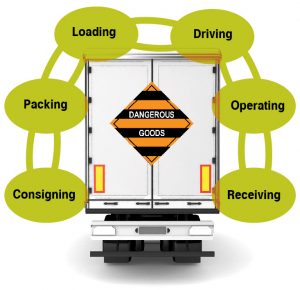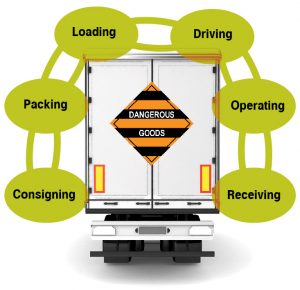
From the 1stof October the chain of responsibility legislation has been broadened in scope in order to more effectively address unsafe practices related to Heavy Vehicles on Australian Roads.
The focus being to reduce pressure on drivers, and to expand the sphere of accountability to include the off-road parties which fall within the supply chain of the goods being carried.
This has been done to encouraging supply chain participants to adopt practices which support safer driving through the identification and removal of unsafebusiness practices which lead to driver pressure and subsequent risk.
Organisations are encouraged to be innovative and adopt intelligence platforms which will facilitate safe business practices and in turn greater productivity,
Parties in supply chain who utilise heavy vehicle transport to move their goods have a duty to ensure the safety of their transport activities.
These parties include but are not limited to:
- an employer or prime contractor of a driver
- the operator of the vehicle
- a scheduler for the vehicle
- a loading manager, loader or unloader of a vehicle or any goods in the vehicle
- a consignor or consignee of any goods for transport by the vehicle
With the expansion of the Chain of Responsibility legislation, its application has expanded beyond the driver’s direct responsibilities of fatigue, speed, mass and dimension management and loading requirements to encompass the following example scenarios –
- situations where schedulers place unrealistic timeframes on drivers
- loading mangers whose practices for loading and unloading impact on driver available driving time.
- Other situations which may put the driver under pressure to speed or exceed their fatigue requirements for work and rest.
Business executives are now expected to –
- understand how to operate transport business safely, understanding the inherent hazards and risks
- resource appropriately to reduce or remove risk, including the implementation of safety management systems.
- review contracts to ensure that they do not require drivers, or the supply chain team to break the law in order to fulfil requirements.
Where an incident becomes an issue for the court of law to resolve, each party in the chain must demonstrate that they took all reasonable steps to prevent the contravention of the legislation or show that they have done everything that is reasonably practicably and could not be expected to have prevented the contravention from occurring.
Safety management system are recommended for implementation in order to eliminate or minimise potential risk, Implementation demonstrates that an organisation doing all that is practicable to ensure safety as a party in the supply chain.
Systems must be coherent, workable, effective and scalable and must encompass the areas of –
- Safety Policy & Documentation
- communicating to staff about safety and development of policy documents.
- Safety Risk Management
- Hazard and Risk identification, Documentation and Reporting.
- examples being, fatigue, rostering, equipment maintenance
- Safety Assurance
- Process of investigation into hazards or risks, with a view of continuous improvement.
- Safety Promotion & Training
- Regular communication and training on areas such as safe processes, mass management, impact of over speed and fatigue.
How can INTERDEV help?
INTERDEV’s xmotion workforce platform can form the basis for a transport organisations Chain or Responsibility implementation assisting business owners, operational teams and drivers with access to the information they need to run an efficient and safe business.
For Operations
- Safe & Efficient Scheduling of jobs, trips, journeys.
- Driver Rostering
- Drive Fitness for Duty
- Driver Induction & Training Register
- Leave Management Process
- Driver Timesheet
- Breaks
- Expenses
- Vehicle Maintenance Event Management
- Vehicle Safety Checks.
- Incident Review Workflow
- Hazard Review Workflow
Drivers benefit from using one application to manage their entire day from start of shift to completion.
- Start and End of shift events, Breaks, Delays
- Fitness for Duty
- Vehicle Safety and Compliance
- Job Information include safe workflow management.
- Incident Reporting
- Hazard reporting
-
- Breaks
- Delays
- Journey Management Plans
- Site Access Documentation
- Policy Documents stored locally
* Note, we do not try to replace existing finance or payroll systems, our platform is designed to integrate into these systems together to bring a single view of the data you need to run your business.
For more information on Chain of responsibility & safety management systems visit – nhvr.gov.au/sms
To find out more, on INTERDEV Driver and Delivery management solutions contact us now